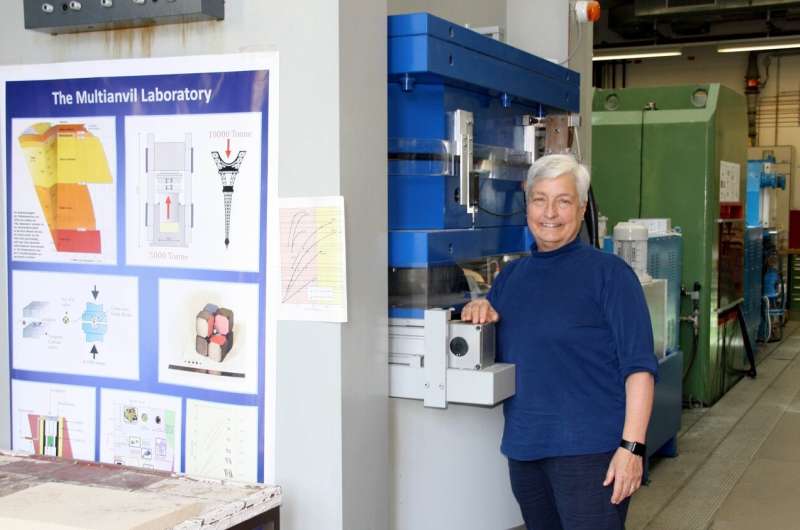Researchers simulate processes prevailing in early magma oceans

The reason why the Earth's atmosphere has contained so much oxygen since about two billion years ago compared to the atmospheres of other known planets has for a long time remained a mystery. Researchers at the Bavarian Research Institute of Experimental Geochemistry & Geophysics (BGI) at the University of Bayreuth recently used high-pressure experiments to substantiate a hitherto unproven suspicion: In early geological history, high pressure in magma oceans triggered processes that resulted in the Earth's upper mantle becoming highly oxidized. This subsequently led to oxygen-rich compounds such as carbon dioxide and water vapor escaping from the mantle into the atmosphere. The scientists have presented their findings in the journal Science.
It has been known for some time that during the formation of the Earth many smaller celestial bodies—so-called planetary embryos and planetoids—impacted on its surface. Enormous amounts of energy were released in the process, melting large quantities of rock. Hot magma oceans were formed in the Earth's mantle, extending to a depth of up to 2,500 kilometers and containing oxidized iron Fe2+ ("ferrous iron"). The Bayreuth scientists simulated the pressures that acted on Fe2+ in magma oceans in a series of high-pressure experiments. For this purpose, pressures of more than 20 gigapascals were generated in BGI's laboratories. "That's the equivalent of putting the entire mass of the Eiffel Tower on an object the size of a golf ball," says Katherine Armstrong, lead author of the study, who received her doctorate from the University of Bayreuth and now works at the University of California Davis.
In numerous experimental runs, Fe2+-containing rock was exposed to extremely high pressures of a similar magnitude. It turned out that Fe2+ does not remain stable under these conditions: Instead of Fe2+, the run products at the end of the experiments contained a small proportion of non-oxidized iron Fe0 ("metallic iron") on the one hand, and a large proportion of the more strongly oxidized iron Fe3+ ("ferric iron") on the other. At the highest pressure reached, 96 percent of the iron contained in the samples was Fe3+.
These results confirm the hypothesis experimentally for the first time that in early geological history, large amounts of Fe3+ were formed that remained in the upper mantle after the cooling of the Earth. Meanwhile, the non-oxidized iron formed in the magma oceans soon sank to the Earth's core due to its high density. As a result, the upper mantle of the earth was left in a relatively strongly oxidized state. Not far beneath the Earth's surface, various physicochemical conditions developed that over the course of billions of years caused large quantities of oxygen-rich compounds to be released into the Earth's atmosphere, especially carbon dioxide and water vapor, instead of the reduced compounds methane and hydrogen.
"In our new study, we don't claim that the high oxygen content of the Earth's atmosphere compared with other planets is due solely to high-pressure changes in iron. But one thing does seem to be clear: These processes played a major role in the Earth being surrounded by an oxygen-rich atmosphere," says Dr. Catherine McCammon of the Bavarian Research Institute of Experimental Geochemistry & Geophysics, who was closely involved in the research.
More information: Katherine Armstrong et al. Deep magma ocean formation set the oxidation state of Earth's mantle, Science (2019). DOI: 10.1126/science.aax8376
Journal information: Science
Provided by University of Bayreuth




















